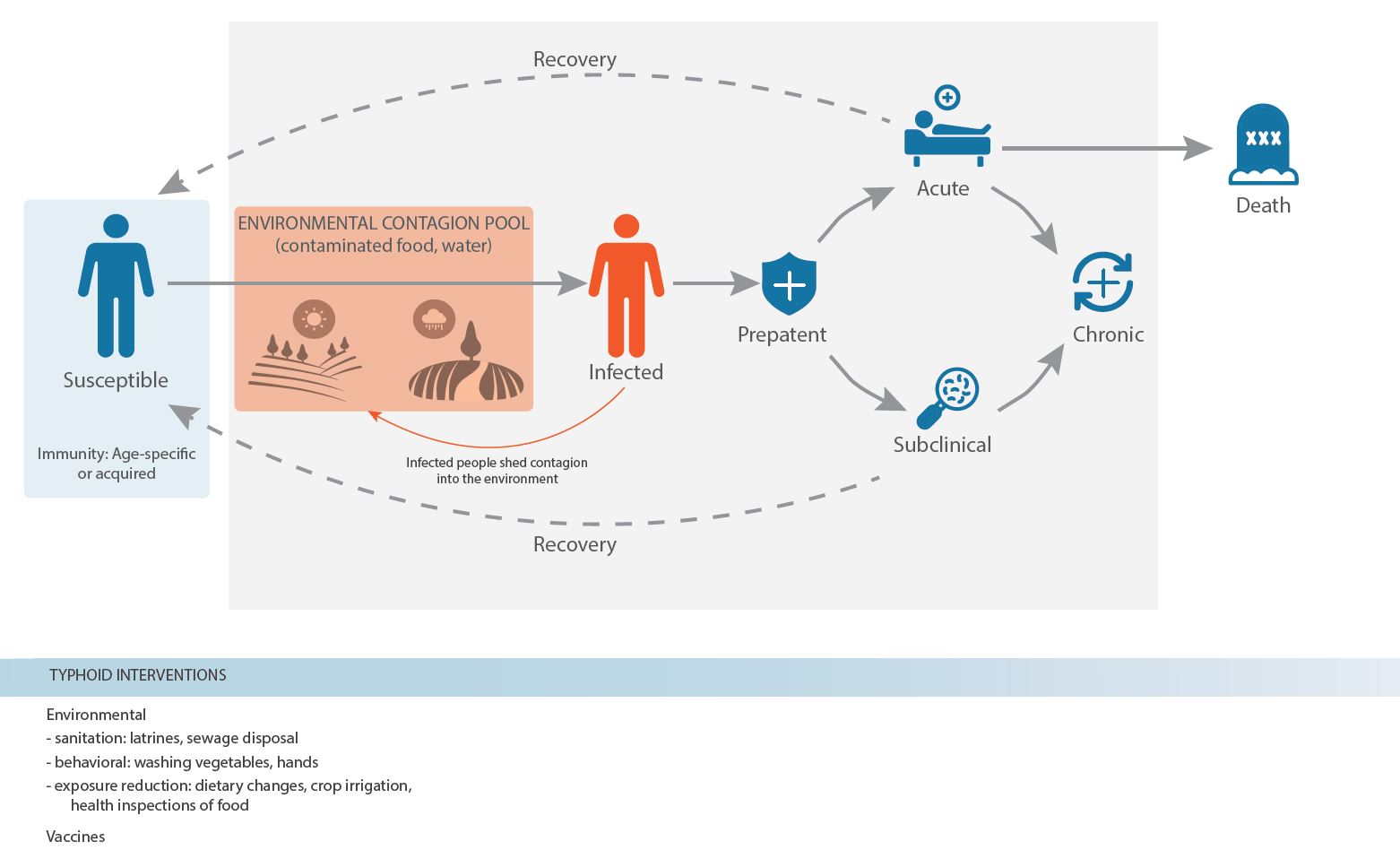Typhoid model overview¶
The Epidemiological MODeling software (EMOD) typhoid model is a stochastic, agent-based model designed to simulate typhoid transmission. The model is built upon the framework of the environmental transmission mode where there are two routes of exposure to contagion: via a contact route or an environmental route (see Disease transmission for more information on the routes). To utilize the typhoid- specific infection, transmission, and immunity features, the configuration parameter Simulation_Type must be set to TYPHOID_SIM.
The TYPHOID_SIM tracks individuals through the progression of typhoid, starting from susceptible then moving through the disease stages of prepatent, subclinical, acute, and chronic, with pathways for recovery and death. The duration of each stage as well as the dosage of contagion exposure can be specified. Infectious individuals shed contagion into both exposure routes, and this shed contagion decays over time. Individuals acquire new infections through a dose-response probability curve, and dose can be mediated by seasonal factors. Individuals may have immunity to typhoid, and will be prevented from acquiring infection (see Disease immunity for more information).
Finally, the model includes multiple interventions. Interventions can act on the environment, such as through improved sanitation and hygiene, food safety measures, and agricultural practices. Interventions may also act on the individual, through vaccination, and the environmental and individual interventions can be combined. See Campaign parameters for the full list of available options.
Typhoid model framework¶
The following diagram illustrates how EMOD tracks individuals through the progression of typhoid. Exposure to typhoid occurs via the “environmental contagion pool,” which includes contaminated food and water sources. After acquiring an infection, individuals progress through the disease stages in the illustrated route. Levels of contagion in the environmental contagion pool vary seasonally (seasonal effects are configurable; see Seasonality for more information), and infected individuals also shed contagion back into the reservoir.

Network diagram illustrating the tyhpoid model and its constituent components.¶
See the EMOD parameter reference for a complete description of all configurable parameters for the typhoid model.
Typhoid model structural components¶
The model’s modular framework includes the following components, which are descibed in subsequent pages. Additionally, the specifics of the model are discussed in detail in the articles Bershteyn, Klein, Wenger, and Eckhoff, arXiv.org, and Klein, Bershteyn, and Eckhoff, AIDS 2014.